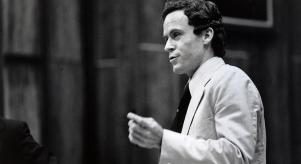
The man who inspired Joker
Warning: This Article Contains Spoilers for Joker.
On December 22, 1984, four black men entered a subway carriage in New York City. What followed was an explosion of violence which became a media sensation, triggering furious debates about crime and race relations in America, and turning a nervous, gawky, bespectacled white man named Bernhard Goetz into a symbol of righteous vengeance… or seething racism, depending on who you asked.
The Goetz incident has become a part of New York folklore, and it came back into the news in 2019 with the release of the smash-hit comic book movie, Joker. A pivotal scene in the film sees Arthur Fleck, the future Joker, accosted by a group of drunken white guys on a train. Fleck, who has already been pushed to breaking point by the madness, crime and squalor of the city, draws a gun and slaughters them all. When the killings hit the news, they make him an immediate outlaw-hero to the city’s downtrodden masses.
This society makes me sick...
There are some key differences between what happens to Fleck in the film, and what happened to Bernhard Goetz in real life. Goetz’s victims were shot but not killed. And they were black, not white, giving the Goetz case its thorny racial dimension. But the essential beats are the same. Goetz was riding the subway when he was set upon by the men, who allegedly demanded money. Goetz snapped, whipped out his gun and shot them down, before escaping from the train and becoming a wanted man. When the police set up a helpline for tips on finding the gunman, they were flooded with calls by citizens hailing the 'subway vigilante' as a hero.
Like Arthur Fleck in the movie, Goetz was an awkward loner who’d been a victim of a prior mugging, and was angrily incredulous about the chaos and inequality of the system he was trapped in. ‘This society makes me sick,’ he once told a neighbour. ‘Its values are so twisted.’
The Gotham City of the Joker movie is also modelled on the early 80s New York City of Bernhard Goetz – a decaying, drug-addled metropolis with soaring crime crates. As a friend of Goetz’s later said, whenever Bernhard left his apartment, he ‘found himself on a littered street of drug dealers and tawdry bargain stores. Junkies nodded out under the building’s awning… All of this chaos seemed too much for Bernie, and he found a focus for his obsessive nature in cleaning up 14th Street.’
By the time Goetz gave himself up and was brought to trial, popular opinion had shifted. While many still saw him as a justified vigilante, with even the director of the Congress of Racial Equality describing Goetz as ‘the avenger for all of us’, many others were disturbed by revelations that Goetz had been known to use racist terms in public, and that his confession to the police had been suffused with savage hatred.
‘If I had more bullets, I would have shot ‘em all again and again,’ he told the detectives. ‘I was gonna gouge one of the guy’s eyes out with my keys afterwards.’
At another point in the police interview, he said: ‘I wanted to kill those guys. I wanted to maim those guys. I wanted to make those them suffer in every way I could. And you can't understand this because it’s a realm of reality that you’re not familiar with.’
There were other troubling aspects to the case. None of the four alleged assailants had brandished a weapon when they approached Goetz on the train. There also was ambiguity about whether Goetz had fired in quick succession, which would have been more forgivable in the court of public opinion, or whether he’d paused and deliberated in between shots. Damningly, Goetz admitted to saying to one of the men, Darrell Cabey, ‘You don’t look so bad, here’s another’ before firing a shot that would leave him permanently paralysed.
Had Goetz actually said these words out loud, or only thought them while firing? It’s impossible to know, but they added fuel to the fire of controversy around the case. While the prosecution in the Goetz case was at pains to point out that ‘this trial is not a referendum on crime’, it was undoubtedly a microcosm of a cultural moment, and still raises questions about the right to self-defence and the rights and wrongs of vigilante justice.
Bernie Goetz is Charles Bronson in Death Wish...
Decades later, in 2012, the spectre of the Goetz case was brought up in connection to the notorious Florida killing of Trayvon Martin, a black teenager who’d been tailed by suspicious neighbourhood watch coordinator George Zimmerman. A struggle had ensued, with Zimmerman claiming he’d shot Martin in self-defence. But some denied any comparison between the two shooters. Curtis Sliwa, founder of the Guardian Angels crime-prevention organisation, said: ‘Bernie Goetz is Charles Bronson in Death Wish. He had enough, and Darrell Cabey represented every guy who had tried to mug him before. George Zimmerman is Travis Bickle in Taxi Driver. He’s a nut.’
Goetz was found guilty only of carrying an illegal firearm, and served a short spell behind bars. In more recent years, he’s been in the news again for championing the rights of New York’s squirrel population – an unlikely denouement for a man whose crime summed up all the strife of a bygone New York and helped inspire one of 2019’s most controversial films.




